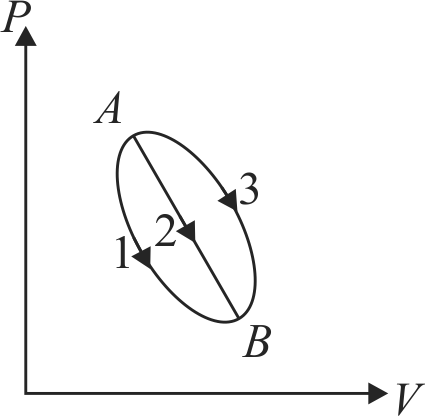371501 A sample of an ideal gas is taken through a process \({A B C D}\). It absorbs \(50\,J\) of energy during the process \({A B}\) which is an isometric process, no heat during \({B C}\) and it rejects \(70\,J\) of heat during isobaric process \({C D}\). It is also given that \(40\,J\) of work is done on the gas during the process \({B C}\). Internal energy of gas in state \({A}\) is \(1500\,J\). The internal energy of gas in state \({C}\) is
371501 A sample of an ideal gas is taken through a process \({A B C D}\). It absorbs \(50\,J\) of energy during the process \({A B}\) which is an isometric process, no heat during \({B C}\) and it rejects \(70\,J\) of heat during isobaric process \({C D}\). It is also given that \(40\,J\) of work is done on the gas during the process \({B C}\). Internal energy of gas in state \({A}\) is \(1500\,J\). The internal energy of gas in state \({C}\) is
371501 A sample of an ideal gas is taken through a process \({A B C D}\). It absorbs \(50\,J\) of energy during the process \({A B}\) which is an isometric process, no heat during \({B C}\) and it rejects \(70\,J\) of heat during isobaric process \({C D}\). It is also given that \(40\,J\) of work is done on the gas during the process \({B C}\). Internal energy of gas in state \({A}\) is \(1500\,J\). The internal energy of gas in state \({C}\) is
371501 A sample of an ideal gas is taken through a process \({A B C D}\). It absorbs \(50\,J\) of energy during the process \({A B}\) which is an isometric process, no heat during \({B C}\) and it rejects \(70\,J\) of heat during isobaric process \({C D}\). It is also given that \(40\,J\) of work is done on the gas during the process \({B C}\). Internal energy of gas in state \({A}\) is \(1500\,J\). The internal energy of gas in state \({C}\) is
